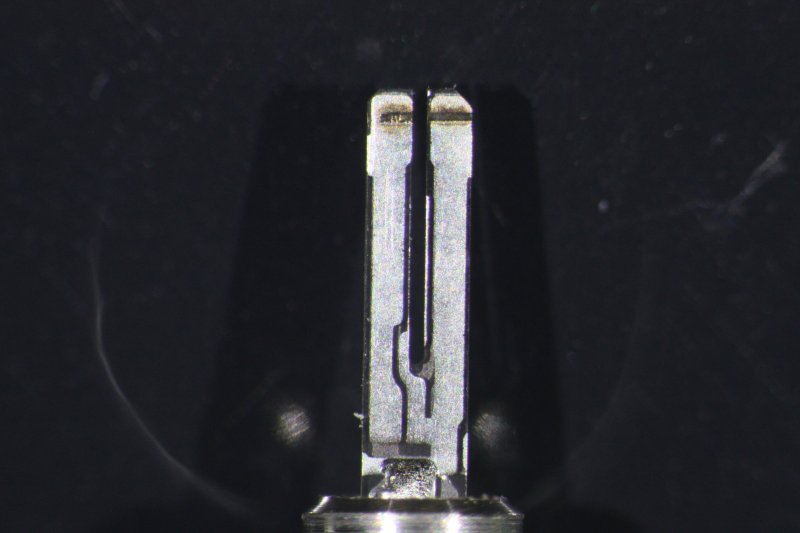Until the 1960s, watches and clocks of all kinds kept track of time with mechanical devices. Springs, pendulums, gears, oils, and a whole host of other components had to work together to keep accurate time. The invention of the crystal oscillator changed all of that, making watches and clocks not only cheaper, but (in general) far more accurate. It’s not quite as easy to see them in action, however, unless you’re [noq2] and you have a set of strobe lights.
[noq2] used a Rigol DG4062 function generator and a Cree power LED as a high-frequency strobe light to “slow down” the crystal oscillators from two watches. The first one he filmed was an Accutron “tuning fork” movement and the second one is a generic 32,768 Hz quartz resonator which is used in a large amount of watches. After removing the casings and powering the resonators up, [noq2] tuned in his strobe light setup to be able to film the vibrations of the oscillators.
It’s pretty interesting to see this in action. Usually a timekeeping element like this, whether in a watch or a RTC, is a “black box” of sorts that is easily taken for granted. Especially since these devices revolutionized the watchmaking industry (and a few other industries as well), it’s well worthwhile to take a look inside and see how they work. They’re used in more than just watches, too. Want to go down the rabbit hole on this topic? Check out the History of Oscillators.
















This is incredible! Thanks for sharing
Did he have to drive the crystal especially hard?
Function generator+LED to get a strobe light! I’m putting that technique in my toolbox…
…in fact, I have a use for it *right now* (determining the speed of a rotating polygon mirror) Eeeeeexcellent.
Did anyone else read that last bit in Mr Burn’s voice?….
I don’t think it’s possible to read it any other way :)
Nice! It reminds me of this one too:
https://www.youtube.com/watch?v=UOfAmsQvgg4
Wow! I had no idea they were tuning-forks. Awesome all ’round, and agreed with pelrun, that’s a great high-speed strobing technique for the ol’ bag-o-tricks.
Am I the only one who thought “We forgot the Cheese, Grommit!” at about 50sec?
Crackers Grommit! We forgot the crackers!
Cool. Imagine the sun’s light flickering at quantum speeds!
Pffft. It’s been done. By Harold Edgerton. 70 years ago.
https://www.youtube.com/watch?v=IspfTt9Plqw
I hope you’re not serious. Sarcasm is difficult to read on the ‘net.
I´ve never seen an XTAL oscillating that slow, in the Hz range…
iIt is well 32.768kHz, not 32.768Hz ! I hope the author has an edit button …
I think you’re confusing a European and American notation. In american notation, the comma indicates the thousands delineation. So 32,768 Hz (as written in the article) is the same as 32.768 kHz
well, 32,768 KHz = 32.768 Hz
Try again. 32,768 KHz = 32.768 MHz. Your decimal point went the wrong direction.
32,768KHz is less than 40KHz if you live on the other side of the Atlantic.
This is really neat, but not exactly ground-breaking. I have a 12V inductive Strobe sitting in the closet right now. Turns out these were pretty commonplace back when you automobile ha a distributor to initiate the combustion process in each cylinder. Mine is a Sears/Craftsman in Die Cast finish is is accurate to 8000 rpm (that’s only 133.33Hz so not exactly high frequency).
To be serious: old idea, neat application
Sure, but an LED can flash in the MHz, no? Even GHz… (fiber-optics!). Strobing at 1GHz… hmm…
*Definitely* some neat ideas in there…
Do transmitting antennas vibrate? What piece of that inductor is causing that squealing in my switching power-supply? Could make for some interesting effects with backlighting on LCDs; isolating the actual changing of a pixel from black to white… What about higher-frequency (50MHz?) crystal oscillators? What physical effects does high-frequency switching of high power loads have on semiconductors, and heatsinks? Can we *see* thermal expansion as heat transfers through an object? What about the motion of water molecules in a microwave? What happens when interferometers are supplied with pulsed light in these frequencies…? Or, heck, what about single-pulses of light only nanoseconds (or even picoseconds?!) long synchronized with a camera “shutter”…
Maybe too much coffee.
I wonder if phototransistors/photodiodes can also detect light that fast, then you could probably make a high-frequency electrically insulated computing device. If it’s possible to make phototransistor-based NOR gates, that is.
I have read that off the shelf white LEDs can be strobed at low MHz speeds if high currents are used. IIRC it was a few amps at <1% duty cycle.
Was wondering about that… I suppose higher-wattage LEDs probably have higher internal capacitances, which would make switching-speeds deteriorate. Then there’s the fact they’re (often) using phosphor on white LEDs, which I think glows for a duration after its no longer being excited. Red LED-strobing for the win!
Harold: You mean like an optical processor https://en.wikipedia.org/wiki/Optical_computing ?
I found the reference. It does mention non-phosphor white LEDs.
http://proceedings.spiedigitallibrary.org/proceeding.aspx?articleid=1316176
Spot On!
I’d actually be more interested in seeing the hardware setup.
Optical sampling oscillscope :)